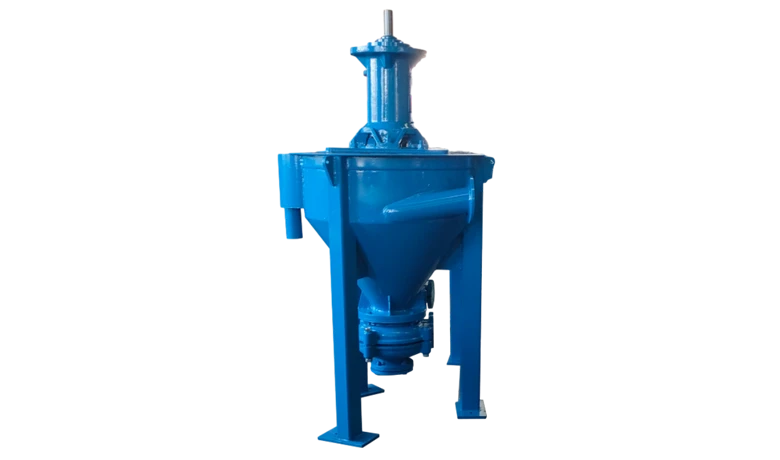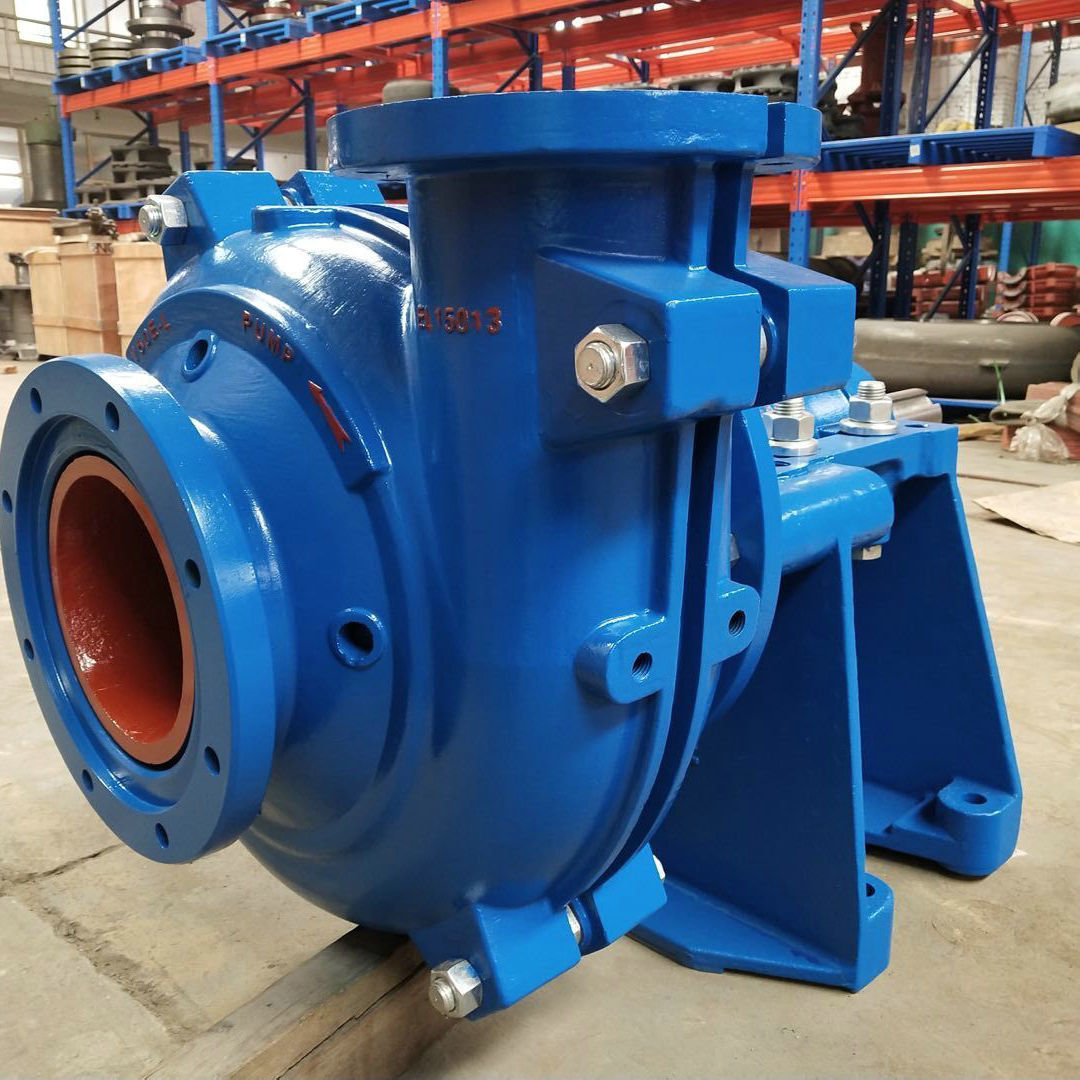08 July 2025

(5 inch pump)
The 5 inch pump stands out as a robust solution for handling moderate to heavy-duty slurry applications across mining, dredging, and industrial sectors. Designed to bridge the gap between compact mobile pumps and high-capacity bulk-moving solutions, it typically features a balance of portability, efficiency, and the capability to handle abrasive or particulate-laden fluids. In terms of construction, the 5 inch pump commonly incorporates a high-chrome iron impeller, rubber or metal liners, and a heavy-duty shaft design to minimize deflection under load. The pump’s volute casing is crafted for optimized hydraulic efficiency, reducing turbulence while maximizing head and flow rates. Essential for both fixed and mobile setups, this pump offers a high throughput-to-footprint ratio, ensuring its adaptability onsite. Understanding its core structure is pivotal for appreciating its performance and blending it seamlessly into various process flows.
A 5 inch pump is engineered for optimal operational efficiency in environments where hydrotransport of solids is a necessity. Unlike smaller pumps that may struggle with oversized solids or abrasive mixtures, a 5 inch variant can reliably pass particles up to 3 inches in diameter, drastically reducing clogging risks. With maximum flow rates reaching 1,500 gallons per minute (GPM) and head potentials surpassing 220 feet under optimal configurations, the pump delivers substantial hydraulic muscle with minimal downtime. Energy consumption, which remains a primary concern, typically peaks between 25 to 35 kW per hour at full load – a significant improvement in energy-to-output ratios when compared to both smaller and larger options. Advanced sealing options, including expeller, gland, or mechanical seals, ensure system integrity across aggressive and high-cycle applications. Additionally, noise and vibration dampening features safeguard both maintenance crews and the pump’s service lifespan.
Understanding the strengths and limitations of varying pump sizes benefits decision-makers aiming for cost efficiency and process reliability. The table below summarizes key technical differences and ideal application profiles among 5 inch, 12 inch, 2 inch slurry pump, and 3 inch slurry pump systems:
| Pump Model | Max Flow Rate (GPM) | Max Head (ft) | Solid Pass (inches) | Power Range (kW) | Weight (lbs) | Typical Applications |
|---|---|---|---|---|---|---|
| 2 inch Slurry Pump | 220 | 70 | 1.0 | 3–7 | 130 | Lab use, pilot plants, sump drainage |
| 3 inch Slurry Pump | 480 | 85 | 1.5 | 7–12 | 215 | Sand pits, batch processing, slurry transfer |
| 5 inch Pump | 1,500 | 220 | 3.0 | 25–35 | 610 | Mining, tailing disposal, civil construction, dredging |
| 12 inch Pump | 6,800 | 150 | 5.5 | 90–160 | 3,780 | Major dredging, hydrotransport in mining, flood control |
While the 5 inch pump offers an optimal balance of mobility and throughput, the 12 inch variant is best reserved for massive scale projects requiring expedited movement of higher volumes. The 2 inch and 3 inch slurry pump models, though highly portable, are generally inadequate for operations involving large debris or high solid concentration. Therefore, selecting the correct model hinges on site conditions, flow requirements, and operational flexibility.
Selecting a 5 inch pump often involves considering brands with proven records of engineering excellence, component durability, and service support. Leading global manufacturers such as Weir Minerals, KSB, and EDDY Pump have carved reputations for high-performance slurry pumps. Weir’s Warman series, for instance, is synonymous with longevity and easy interchangeability of wear parts, offering up to 30% longer wear life in demanding coal and gold mining applications. KSB's GIW line features signature hydraulic profiles, supporting energy reductions approaching 10% over competitive pumps in continuous-duty environments. EDDY Pump is noteworthy for its ultra-low maintenance requirements; it employs a patented non-clogging design perfect for environments with heavy, fibrous, or sticky slurries. Local producers also offer competitive alternatives where customization and short lead times are prioritized. Customer satisfaction metrics and field-proven reliability remain the gold standard against which to measure potential suppliers.
No two slurry environments are identical, making customization a pivotal aspect of pump procurement. Advanced 5 inch pump systems can be tailored with features such as variable frequency drives (VFDs), interchangeable liners (metal or elastomeric), and enhanced impeller designs for specific particle sizing. For chemical resistance, specialized coatings like polyurethane or ceramic are available for wetted parts, prolonging operational lifespans in corrosive solutions. Sizing the pump to existing pipework, drive arrangements, and integration with SCADA or process automation platforms is essential in high-throughput industrial setups. Customized baseplates for mobile trailers, submersible configurations, or side-mounted motor designs enhance installation flexibility. In highly regulated industries like chemical processing, explosion-proof motors and seals ensure compliance without sacrificing hydraulic efficiency. Moreover, modular assemblies enable rapid field servicing—an increasingly valuable trait as production downtime becomes costlier.
The implementation of a 5 inch pump across multiple industries underscores its versatility and return on investment. In a South African gold mine, switching from a 3 inch slurry pump to a 5 inch model translated into a 68% decrease in maintenance interventions and a 23% gain in operational uptime due to reduced clogging and enhanced solid handling. In a US-based dredging project along the Mississippi River, two synchronized 5 inch pumps achieved a sustained transfer rate of 2,700 GPM for over 300 hours, enabling the project to finish ahead of schedule while lowering overall energy consumption by 12% compared to 12 inch pump deployments used in similar environments. Cement plants have employed the pump in recirculating slurry tanks, where replacing rubber-lined liners every 3,000 hours doubled their mean time between failures. These case studies reinforce the adaptability, durability, and superior lifecycle economics of the 5 inch platform.
The 5 inch pump holds a unique position in industrial and mining sectors, delivering substantial hydraulic performance without the logistical burdens of larger alternatives. When evaluated alongside 12 inch pump, 2 inch slurry pump, and 3 inch slurry pump systems, it excels in scenarios demanding high throughput and manageability. Superior technical features, strong manufacturer support, broad customization options, and favorable real-world results distinguish this pump as a prudent, future-ready choice for industry professionals seeking reliability, efficiency, and scalability. Continual innovation in material science and digital integration ensures that the 5 inch solution remains highly relevant as operational demands evolve.

(5 inch pump)
This is the first article